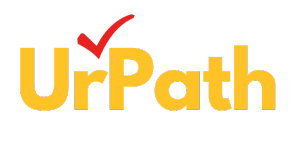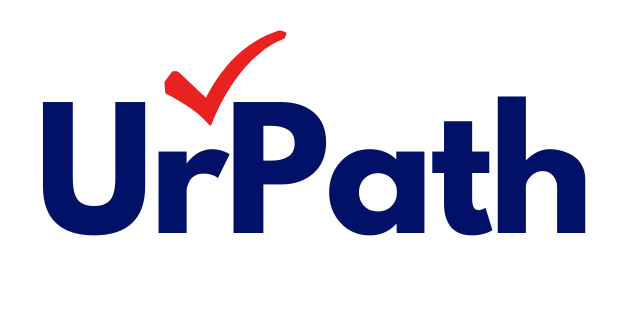Blog Layout
Integrating AI into Higher Education: A Guide for Institutions
Stephanie Wu • October 17, 2024
Book Your Free Initial Consultation Today
8 Steps to Transform Higher Education with AI

Artificial Intelligence (AI) is rapidly transforming various sectors, and higher education is no exception. By leveraging AI tools and technologies, institutions can enhance teaching, learning, and administrative processes. Here's a guide to help higher education institutions effectively integrate AI into their practices:
1. Identify Areas for AI Implementation
- Personalized Learning: Tailor educational experiences to individual student needs, preferences, and learning styles.
- Intelligent Tutoring Systems: Provide students with personalized feedback, guidance, and support.
- Administrative Efficiency: Automate tasks like grading, enrollment management, and resource allocation.
- Research and Innovation: Use AI to analyze large datasets, identify trends, and accelerate research projects.
2. Assess AI Tools and Technologies
- Evaluate Existing Tools: Identify AI-powered tools that align with your institution's goals and resources.
- Consider Customization: Explore options for customizing AI tools to meet specific needs and workflows.
- Prioritize Scalability: Choose tools that can handle increasing workloads and accommodate future growth.
3. Develop a Strategic Plan
- Define Objectives: Clearly articulate the desired outcomes of AI implementation.
- Identify Key Stakeholders: Involve faculty, staff, students, and administrators in the planning process.
- Allocate Resources: Ensure adequate funding, technical support, and training for AI initiatives.
- Establish Governance: Create a framework for overseeing AI implementation and addressing ethical concerns.
4. Provide Faculty Training
- Offer Workshops and Training Sessions: Equip faculty with the skills to effectively use AI tools in their teaching.
- Foster Collaboration: Encourage faculty to share best practices and collaborate on AI projects.
- Support Professional Development: Provide opportunities for faculty to stay up-to-date on AI advancements.
5. Address Ethical Considerations
- Data Privacy and Security: Implement robust measures to protect student data.
- Bias and Fairness: Ensure AI algorithms are unbiased and do not perpetuate discrimination.
- Transparency and Accountability: Be transparent about AI usage and establish accountability mechanisms.
6. Pilot and Evaluate AI Initiatives
- Start Small: Begin with pilot projects to test the effectiveness of AI tools in specific courses or departments.
- Gather Feedback: Collect input from faculty, students, and staff to assess the impact of AI initiatives.
- Iterate and Improve: Continuously refine and improve AI implementations based on evaluation results.
7. Integrate AI into Curriculum
- Develop AI-Related Courses: Offer courses on AI fundamentals, ethics, and applications.
- Infuse AI into Existing Courses: Incorporate AI concepts and tools into relevant courses across disciplines.
- Prepare Students for the Future: Equip students with the skills to thrive in an AI-driven world.
8. Conduct Regular Evaluations and Adjustments:
- Quarterly Check-ins: Conduct quarterly visits to assess the performance of AI integration among students and faculty.
- Gather Comprehensive Feedback: Collect feedback from a diverse range of stakeholders, including students, faculty, and staff.
- Evaluate Effectiveness: Assess the impact of AI on student outcomes, teaching effectiveness, and administrative efficiency.
- Make Data-Driven Decisions: Use feedback and evaluation data to inform decisions about continuing, modifying, or expanding AI initiatives.
- Calculate ROI: Regularly calculate the return on investment (ROI) to ensure that AI initiatives align with institutional goals and financial sustainability.
By following these steps, higher education institutions can effectively integrate AI into their teaching and learning practices, enhancing student outcomes, improving operational efficiency, and fostering innovation.
Got Any Questions?

By Hayoung Kim
•
November 14, 2024
Unlock the full potential of webinars as a versatile tool in your B2B marketing strategy. From showcasing your product to launching and discussing new eBooks or whitepapers, sharing thought leadership insights, and highlighting customer success stories, webinars offer endless opportunities. Whether you’re looking to drive brand awareness, engage your target audience, or generate qualified leads, this step-by-step guide—based on my extensive experience—will help you create impactful and effective webinars that deliver results.

By Stephanie Wu
•
November 7, 2024
A successful omnichannel strategy requires careful planning and continuous optimization. Here are the key steps: 1. Evaluate and Define Goals Start by setting clear objectives that align with the institution's overarching goals, such as increasing inquiries, boosting application numbers, or driving enrollments. From my experience working at Google’s Growth Lab, I learned the importance of identifying a North Star Metric— a single, most critical indicator that best represents the success of the product or offering. Establish supporting KPIs to track performance along the way, ensuring that all activities contribute to the North Star Metric. Setting quarterly OKRs (Objectives and Key Results) and measuring progress against them provides a focused direction for the strategy and enables continuous alignment with institutional objectives. 2. Conduct Market and Competitor Research To build a truly effective omnichannel strategy, it’s essential to conduct thorough market and competitor research that goes beyond examining similarly ranked institutions. Start by evaluating competitor strategies and analyzing student expectations to identify unique opportunities and differentiators. Competitor research should be approached holistically—your competitors are not only institutions with a similar ranking or academic focus but also those offering unique engagement strategies or programs that attract your target demographics, even if their core offerings differ. Look closely at the marketing channels, messaging, and engagement tactics other institutions are using, whether they share your academic profile or not. For example, a specialized art school might learn valuable lessons from the digital engagement strategies of a large research university, or a liberal arts college might find innovative recruitment approaches from vocational schools. This broader perspective on competitors helps reveal gaps, new trends, and untapped channels that can be adapted to fit your institution’s goals. By understanding what others are doing and refining your strategy based on these insights, you can better position your institution to stand out and capture the attention of prospective students. 3. Select the Right Channels As emphasized earlier, use data-driven insights to identify the most effective channels for reaching specific student segments, optimizing both engagement and ROI. By analyzing data on student preferences and behaviors, institutions can make informed decisions on where to invest marketing resources for maximum impact. For example, prospective undergraduate students often engage more with visually rich, interactive platforms like Instagram, TikTok, and YouTube, which allow for immersive storytelling. In contrast, graduate or executive education students may be more responsive to LinkedIn and email campaigns, where professional content, career outcomes, and academic rigor are emphasized. Selecting the right channels involves continually assessing which platforms generate the highest engagement and conversion rates among target audiences. Analyzing metrics such as click-through rates, time spent on content, and conversion paths across channels enables institutions to prioritize investments in high-performing platforms. This approach ensures each marketing dollar is allocated to channels that align best with each segment’s preferences, ultimately driving stronger engagement, more completed applications, and a higher return on investment. 4. Invest in Technology and Training Providing recruitment teams with advanced tools and proper training is crucial for a streamlined and effective recruitment process. Start by equipping them with CRM systems to manage relationships and track interactions with prospective students. These systems allow recruitment teams to capture valuable data, follow up efficiently, and maintain personalized communication with leads throughout their journey. Analytics platforms are another essential investment, offering insights into the effectiveness of campaigns, understanding student behaviors, and identifying the best channels for outreach. With data-driven insights, recruitment teams can make informed decisions, targeting the right students and optimizing their strategies over time. Marketing automation tools further enhance efficiency by automating repetitive tasks, such as sending emails, segmenting leads, and scheduling follow-ups. This frees up time for recruitment teams to focus on personalized outreach and engagement strategies that build stronger connections with prospective students. Equally important is training staff to use these technologies effectively. Ensuring they understand how to leverage each tool to its fullest potential will lead to seamless execution of campaigns, better data management, and ultimately, higher conversion rates. When teams are both well-equipped and well-trained, they can work more efficiently and effectively, enhancing the overall success of recruitment efforts. 5. Continuously Optimize To maximize the effectiveness of recruitment efforts, it’s essential to regularly evaluate and adjust campaign performance across all channels. Continuous optimization involves analyzing data from each channel—whether it’s email marketing, social media, search ads, or events—to understand what’s working and what isn’t. By regularly assessing metrics like engagement rates, conversion rates, and cost-per-lead, recruitment teams can identify trends, pinpoint areas for improvement, and make data-driven decisions. This iterative process is crucial for refining the messaging, channel selection, and targeting to ensure every interaction resonates with the intended audience. For example, if data shows that certain messages resonate more on social media than email, teams can adjust their approach by focusing on that channel for similar campaigns. Likewise, if one segment of the audience responds well to specific content, such as testimonials or career outcome data, this can guide future content strategies. Continuous optimization is especially critical for improving ROI and ensuring efficient use of the marketing budget. By analyzing which channels yield the best results for the lowest cost, recruitment teams can allocate more resources to high-performing channels while reducing spend on those that aren’t delivering. This approach prevents wasting marketing dollars on ineffective channels and strategies, instead focusing on areas that maximize return. Ultimately, continuous optimization ensures the omnichannel strategy remains relevant and aligned with evolving student behaviors, enabling the recruitment team to consistently reach their goals while maintaining a strong ROI. This disciplined approach not only keeps campaigns efficient but also sustains engagement, strengthens connections with prospective students, and maximizes the value of every marketing dollar spent.
CONTACT US
info@urpath.org
68 Harrison Ave
Ste 605 PMB #991996
Boston, MA, 02111
+1 (508) 283-8699
ABOUT
SERVICES
JOIN OUR NEWSLETTER
Contact Us
Thank you for signing up to receive our newsletter. You will receive it when we have announcements to make!
Oops, there was an error sending your message.
Please try again later.
Please try again later.

© 2025
All Rights Reserved | UrPath LLC

